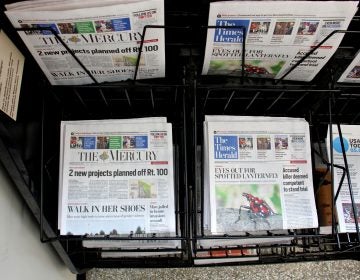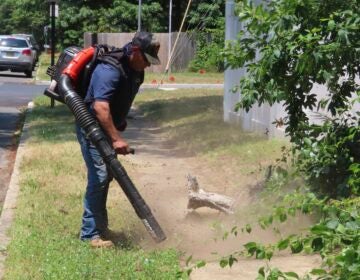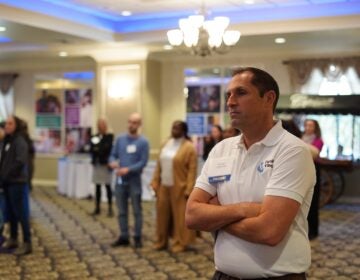How media startups in the Philly suburbs are trying to fill the local news ‘void’
Dozens of media startups in Pa. are trying to fill gaps in coverage, while battling the same financial challenges that undercut the newspaper business.
Listen 4:48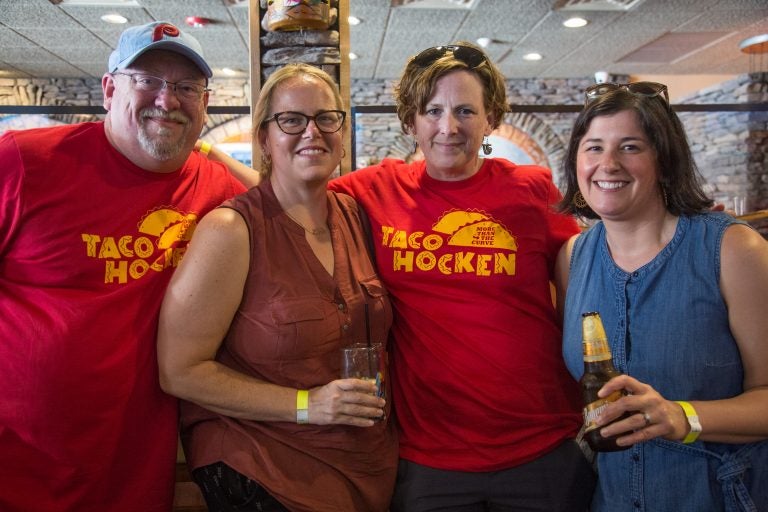
Bill Sidler, Lori Howlett, Gretchen Sidler, and Dorrie Dillagoue came together with their running group for an afternoon of tacos and drinks at Tacohocken. (Emily Cohen for WHYY)
On a cloudless Saturday in Conshohocken, groups of people in red t-shirts roam the streets of the Montgomery County borough, in search of tacos.
It’s the first ever Tacohocken, a Mexican food-themed bar crawl held by the hyperlocal news site More Than The Curve.
While journalism is not the focus of the event, each $20 ticket helps support the site, which is owned by Burb Media, LLC and named for the 90-degree turn on the Schuylkill Expressway on the way to the borough.
“It’s fun to read the comments on the posts and get some local news,” said communications specialist Patricia Powell, who lives in Conshohocken. “I really don’t know any other way I would get it.”
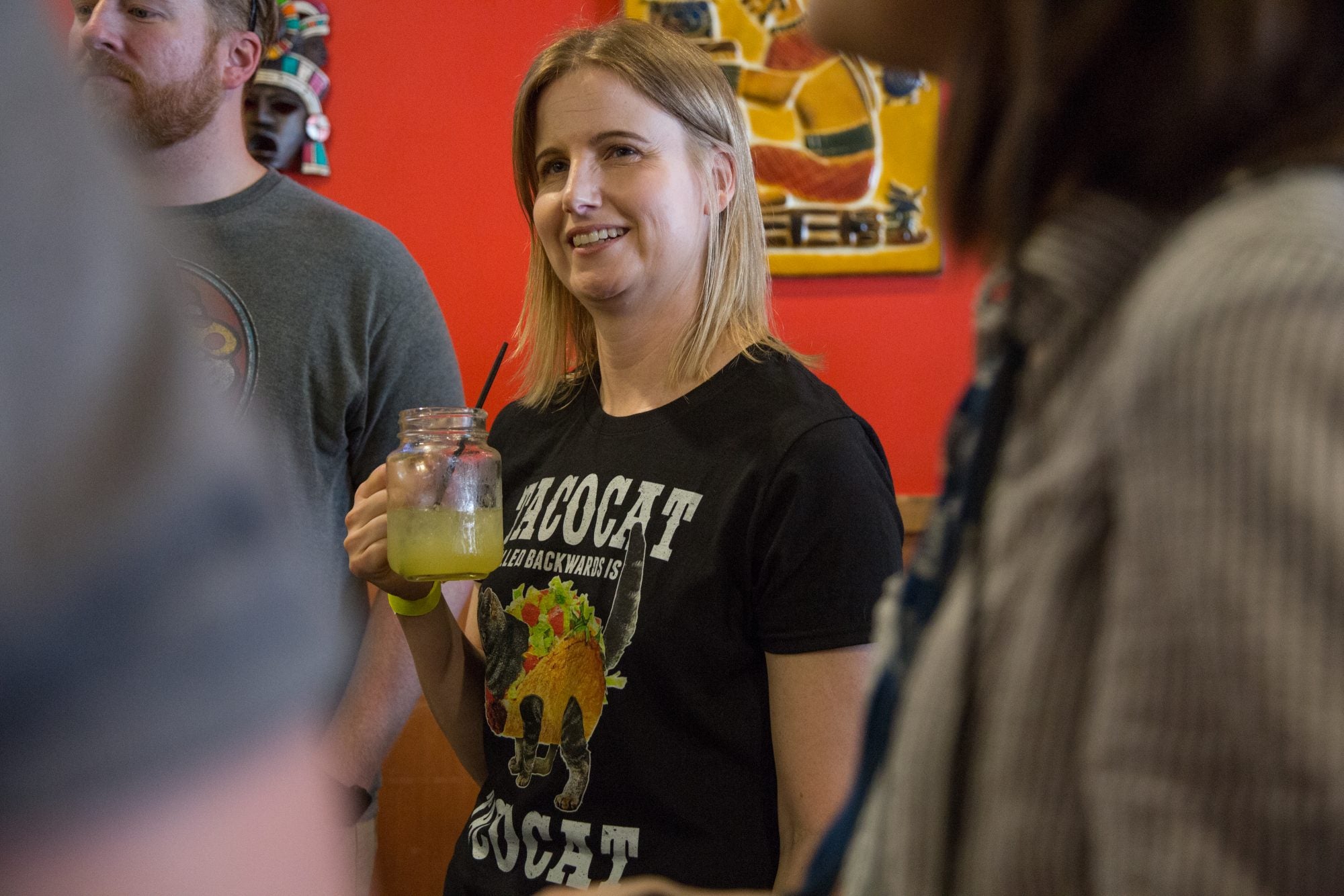
Small daily or weekly newspapers, focusing on a single town or handful of municipalities have traditionally supplied hyperlocal news. But these outlets now produce less journalism as hedge fund-backed media companies have brought a slash-and-burn approach to pulling revenue out of papers in Philadelphia’s collar counties.
Meanwhile, dozens of new media startups like More Than The Curve have cropped up in Pennsylvania to try to fill gaps in coverage, either by topic or geography, while also battling the same financial challenges that have undercut the newspaper business.
We asked, you answered
WHYY recently asked listeners and readers how you get local news. Nearly three-dozen people responded from across Southeastern Pennsylvania.
Many described a dearth of information at the township or neighborhood level, depending on where they live.
“Local news coverage is just abysmal in the ‘burbs,” said Beth Zachai, of Easttown Township, who added that her area lacks local government and environmental coverage.
“The Lansdale Reporter has essentially one reporter who does a valiant job of covering the governmental bodies,” said someone who self-identified as “Longtime Lansdale Reporter subscriber.” “But many feature stories have to go uncovered.”
Other listeners said search engines and these new media startups are their go-to for local news and information.
Meg Mitchell, a librarian from Abington, said she reads the local paper, as well as stories from newer sites like Glenside Local that show up in her social media feeds.
“I get things from the people I know and am connected with. I miss things from the people I don’t know, or groups I’m not connected with.”
When asked which topics deserve more coverage, respondents said: taxes, schools, infrastructure, environment, public policy, local politics, corruption, The Free Library, gentrification, campaign finance, housing, pipelines, and information about local candidates, as well as local businesses and events.
Essentially, all of the issues that would be covered by a more robust local news source.
“I know we’re not going to go back to one, little, tiny newspaper,” said Mitchell. “On the other hand, I wish there were still a way that there was once source everybody could look at. Then you could be sure everyone is getting a basic understanding together.”
‘Trying to fill a void’
Between 2007 and 2018, newsrooms across the country lost nearly a quarter of their staff, with newspapers taking the biggest losses, according to the Pew Research Center. While some journalists leave the field, others have taken their experience and sources online.
Tom Sofield, 28, got the idea for his first hyperlocal news website, Levittown Now, while still taking courses at Bucks County Community College.
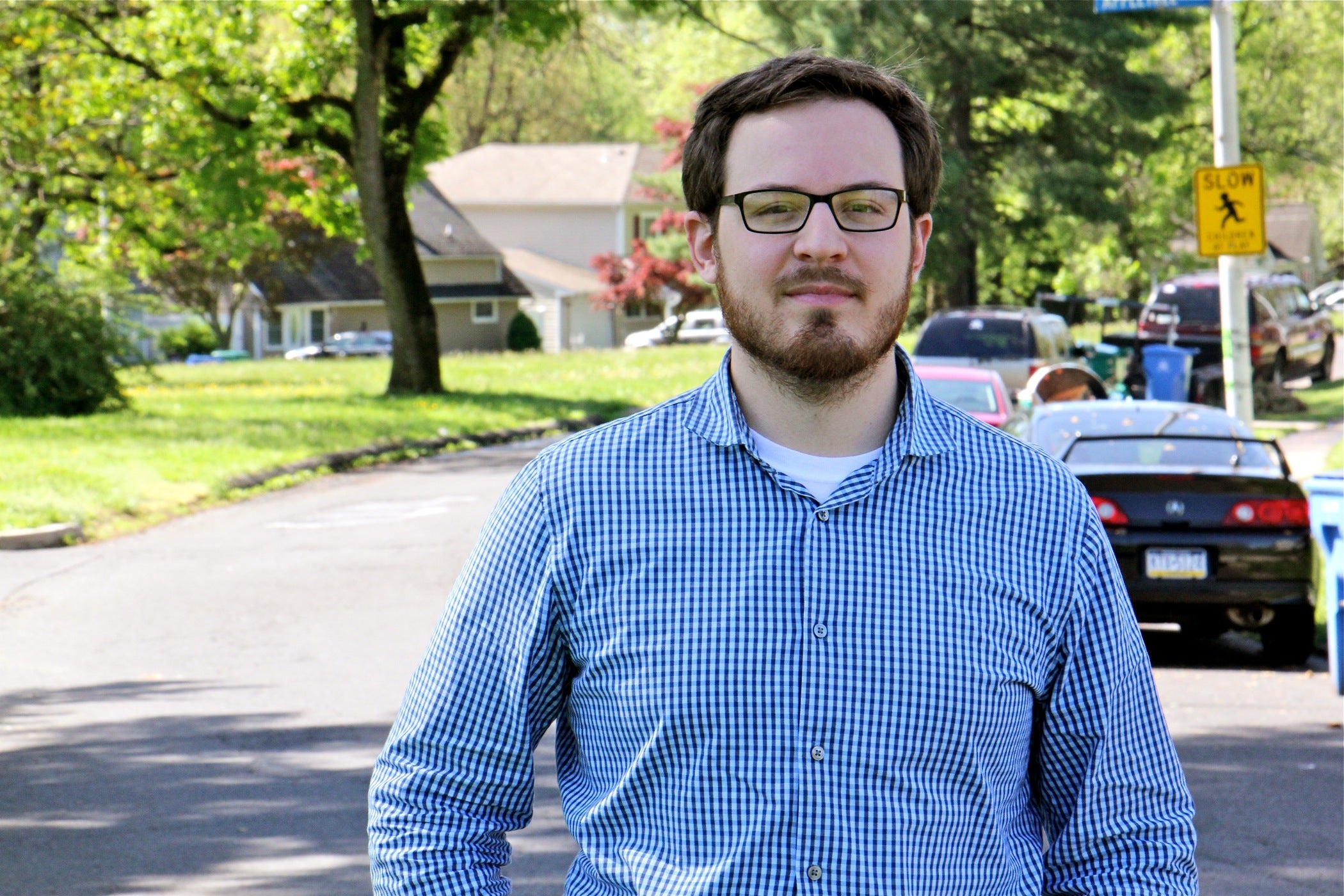
“It was kind of an accident,” he said. “We started an online blog for a class and people started reading it.”
Sofield now runs two sites focusing on Bucks County, Levittown Now and Newtown Now, after spending some time at the news website Patch. Just before launching Levittown Now, he said he interviewed at a local suburban newspaper but was put off by the news that some people in the building were about to be laid off.
“Might as well give this a go of it,” he said he thought at the time.
Levittown Now has a monthly readership of more than 150,000, and Newtown Now more than 30,000, according to Sofield.
In some cases, former community journalists squeezed out of local reporting find less formal ways to share their expertise.
Reporter James Boyle used to cover Warminster for Patch and the Bucks County Courier Times.
As Patch faltered and was sold by AOL in 2014, Boyle launched a Facebook page called Warminster Live, leaning on his established sources to aggregate news stories and press releases relevant to the Bucks County township.
He currently works full-time for a trade publication, but attends some local government meetings and maintains the social media feed out of a sense of duty.
“I’m just trying to fill a void,” he said.
He has not tried to make money off the service. While the internet has made it easier to share information, it has not made it easier to pay for news.
Balancing business and journalism
“The clear majority of local news organizations rely on advertising,” said Stefanie Murray, Director of the Center for Cooperative Media at Montclair State University.
The problem is that those ad dollars are migrating elsewhere. In 2018, Google took home $4.7 billion from ads tagged onto news stories, according to a study by the News Media Alliance. The tech giant has refuted that number, but the trend still holds: Advertising dollars continue to flow out of local news operations.
To cope, some outlets are branching out to find new ways to make ends meet.
More Than The Curve started in 2009 by former events manager Kevin Tierney, uses events to help cover the cost of producing journalism for Conshohocken, Lafayette Hill, Plymouth Meeting, and West Conshohocken.
Tacohocken is just one of several festivals put on by Burb Media, LLC, More Than The Curve’s parent company, which leverage sponsorship from local businesses to bring in revenues.
Membership programs are another. Sofield created the “In The Know” club for Levittown Now readers who wanted to support the site financially. In exchange, the site provides text message alerts about road closures and other announcements, as well as raffles off tickets or prizes to subscribers.
In some cases, news outlets are choosing to become nonprofits and are pursuing grant funding, although Murray noted nonprofit status is a tax designation and not a way to make money.
The TAPinto network, founded in New Jersey, uses a franchise model to spread the tools to gather and share news, licensing news site to “business executives, public relations professionals, journalists, hardcopy newspapers, nonprofits and universities,” according to its website.
To keep costs down new journalism outlets also tend to be small and scrappy, sometimes run by just one person. Even so, balancing the business side and the journalism side involves making some tough calls.
Sofield recently converted two steady reporting positions to a handful of freelance ones, as a part of a larger business reorganization.
“That’s the thing about the news business, you’re always trying to weigh what works, what doesn’t, what you can afford, what you can’t afford,” he said, adding that the freelance positions allow for more flexibility in scheduling, especially on days when there are multiple newsworthy events to cover.
Population density, strong local identity, and a healthy small business community help create a fertile environment for news. Those ingredients still do not guarantee a news business will flourish.
“What our research has found is that news startups that are started in wealthier areas are more likely to succeed,” said Murray.
More Than The Curve, along with related sites Around Ambler and Glenside Local, has been hitting aggressive traffic goals, but not its advertising revenue goals.
“We definitely have struggled with finding the right type of advertisers,” said Tierney. In addition to events and membership programs, he said they’re thinking of launching an obituary page to raise revenues.
‘If we don’t tell our own stories, they don’t get told’
In spite of these challenges, local news boosters persist in part because it’s a way of investing in a place.
By day, Stefan Roots works for Delcora, the regional water management authority in the city of Chester. Roots, a community journalist, also publishes a monthly newspaper called Chester Matters, and highlights and critiques local reporting about his hometown via a blog and newsletter of the same name.
When he got started, Roots was trying to combat the perception that not enough positive stories are told about Chester, which has a high murder rate and struggles with poverty.
But he realized it’s not just about numbers — negative stories also get more traction.
“When I started giving people good news stories, I found out pretty quickly that if I do a personal profile of someone who did something successful … it just doesn’t resonate with everyone as much as I would hope it would,” he said. The audience tends to be just the friends and family of the person covered.
“But I keep doing it,” he said, because it’s important to have someone from Chester, which is majority black, writing about them.
“If we don’t tell our own stories, they don’t get told,” he said.
WHYY is your source for fact-based, in-depth journalism and information. As a nonprofit organization, we rely on financial support from readers like you. Please give today.


